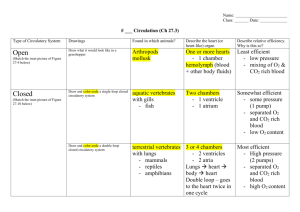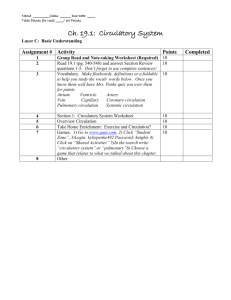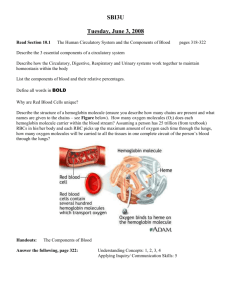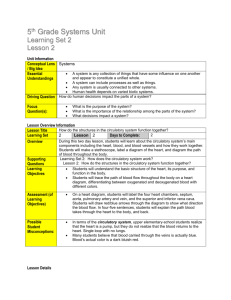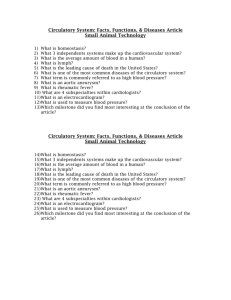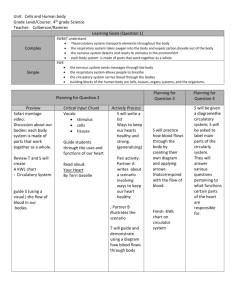27.3 Circulation
advertisement
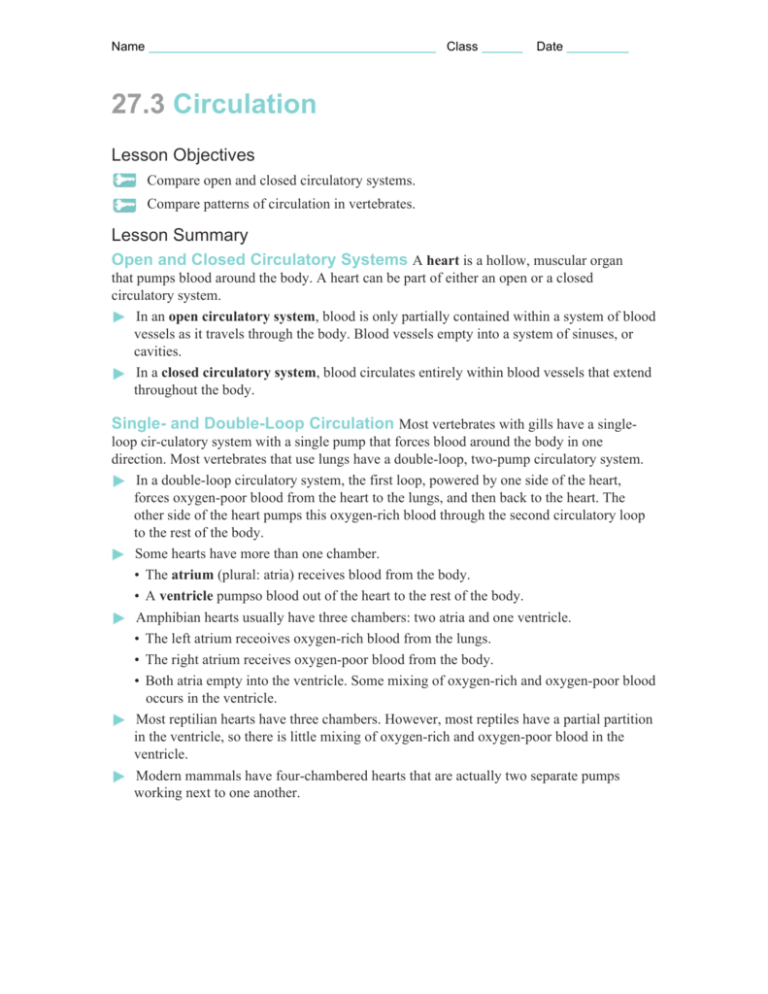
Name Class Date 27.3 Circulation Lesson Objectives Compare open and closed circulatory systems. Compare patterns of circulation in vertebrates. Lesson Summary Open and Closed Circulatory Systems A heart is a hollow, muscular organ that pumps blood around the body. A heart can be part of either an open or a closed circulatory system. In an open circulatory system, blood is only partially contained within a system of blood vessels as it travels through the body. Blood vessels empty into a system of sinuses, or cavities. In a closed circulatory system, blood circulates entirely within blood vessels that extend throughout the body. Single- and Double-Loop Circulation Most vertebrates with gills have a singleloop cir-culatory system with a single pump that forces blood around the body in one direction. Most vertebrates that use lungs have a double-loop, two-pump circulatory system. In a double-loop circulatory system, the first loop, powered by one side of the heart, forces oxygen-poor blood from the heart to the lungs, and then back to the heart. The other side of the heart pumps this oxygen-rich blood through the second circulatory loop to the rest of the body. Some hearts have more than one chamber. • The atrium (plural: atria) receives blood from the body. • A ventricle pumpso blood out of the heart to the rest of the body. Amphibian hearts usually have three chambers: two atria and one ventricle. • The left atrium receoives oxygen-rich blood from the lungs. • The right atrium receives oxygen-poor blood from the body. • Both atria empty into the ventricle. Some mixing of oxygen-rich and oxygen-poor blood occurs in the ventricle. Most reptilian hearts have three chambers. However, most reptiles have a partial partition in the ventricle, so there is little mixing of oxygen-rich and oxygen-poor blood in the ventricle. Modern mammals have four-chambered hearts that are actually two separate pumps working next to one another. 428 Name Class Date Open and Closed Circulatory Systems 1. Use the Venn diagram to compare and contrast open and closed circulatory systems. Open Circulatory Systems 2. Closed Circulatory Systems THINK VISUALLY Label the structures shown on each organism. Then write on the line below the organism whether the organism has an open or a closed circulatory system. Single- and Double-Loop Circulation 3. Identify where the blood is carried in each loop of a double-loop circulatory system. 4. Why is a four-chambered heart sometimes described as a double pump? 5. What is the difference between a reptilian heart and an amphibian heart? 429 Name Class Date For Questions 6–9, complete each statement by writing the correct word or words. 6. In most vertebrates with gills, the heart consists of chambers. 7. The heart chamber that pumps blood out of the heart is called the 8. Most vertebrates that use gills for respiration have a loop circulatory system. 9. In a double‐loop system, oxygen‐poor blood from the heart is carried to the . 10. THINK VISUALLY Draw the arrows showing the path of blood through the circulatory systems shown. On the lines beneath the illustrations, identify what kind of animal may have each type of circulation. Apply the Big idea 11. On the basis of what you have learned about circulatory systems, infer how many chambers a bird’s heart has. Explain your answer. 430
